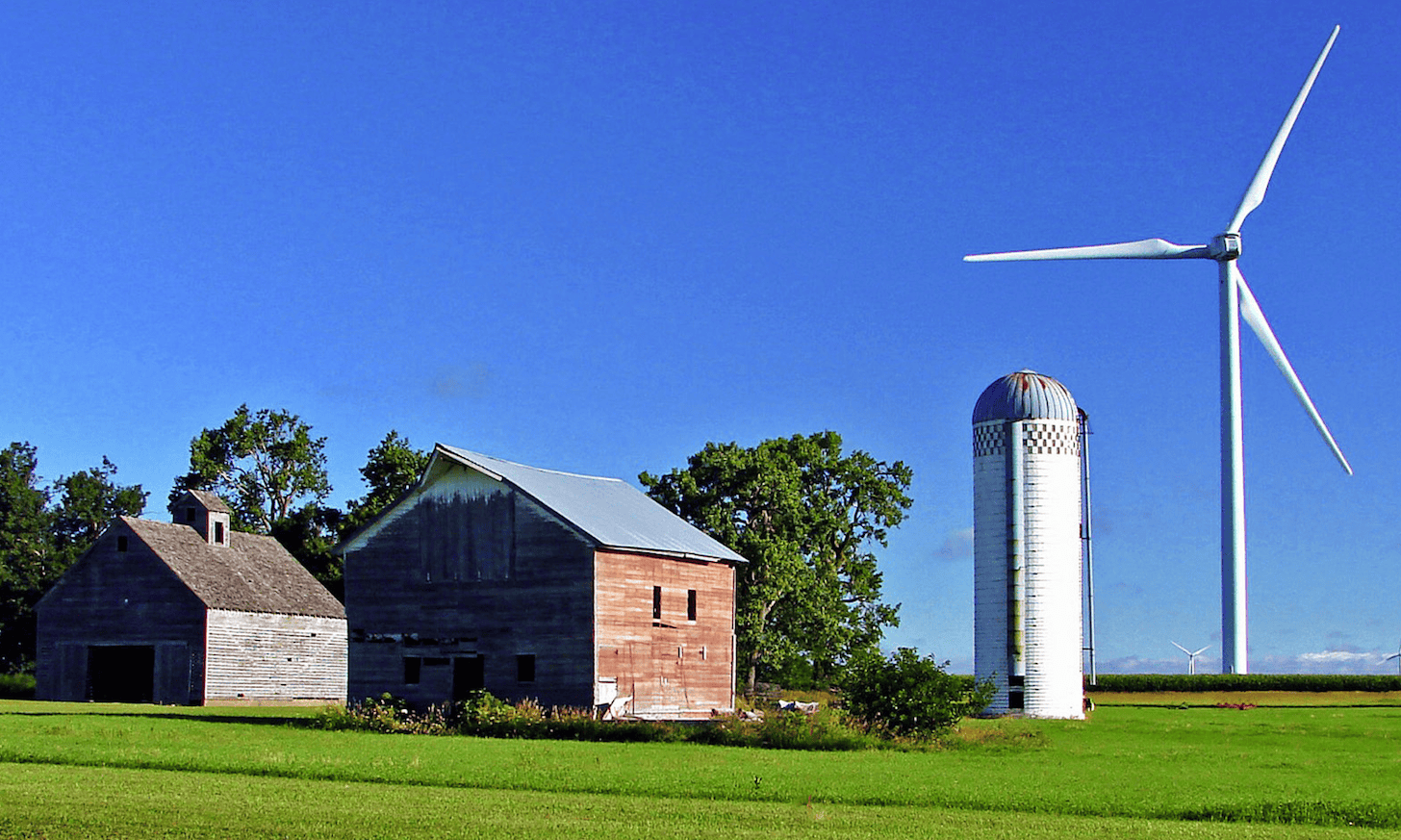
[Image above] Credit: Don Graham; Flickr CC BY 2.0
Relying on fossil fuels is sort of like living on a credit line from Mother Nature that’s impossible to repay—while harnessing the power of renewables is like living within your means and also socking away cash for the future.
And we’re getting pretty close to shedding the need for combustible sources of power like crude oil, coal, and natural gas in favor of sunlight, wind, rain, tides, waves, and geothermal heat.
The challenge to convert the U.S. to 100% clean, renewable energy has seemed to have a big, flashing “in-progress” sign up until recently. Now we’re seeing green energy solutions become more economical and mainstream. (Think solar panels on residential rooftops and wind turbines that supply power to communities across the nation.) With each green-energy development, our carbon footprint gets a little smaller.

Solar panel array at the George Washington Carver Center in Belstville, MD. Credit: U.S. Department of Agriculture
Engineers at Stanford University have developed roadmaps for a “state-by-state plan to convert U.S. to 100% clean, renewable energy by 2050,” and they’ve outlined how this could work in a recent paper.
Mark Z. Jacobson, a professor of civil and environmental engineering at Stanford, and his colleagues are the first to illustrate how each state can replace fossil fuel energy with entirely clean, renewable energy in the next 35 years.
The plans are aggressive, though, and call for extensive changes to infrastructure and how we use energy—but the engineers say in the report that current barriers to implementing the roadmaps aren’t technical or economic.
“The main barriers are social, political and getting industries to change. One way to overcome the barriers is to inform people about what is possible,” Jacobson says in a Stanford article about the study. “By showing that it’s technologically and economically possible, this study could reduce the barriers to a large scale transformation.”
To understand the broader picture of energy use state by state, Jacobson and his colleagues looked at energy usage in the residential, commercial, industrial, and transportation sectors.
They analyzed the current amount and source of the fuel consumed—fossil fuels, nuclear power, and renewables—and calculated the fuel demands if all fuel usage were swapped out for electricity in each sector. But they made sure to base their calculations only on integrating existing technology.
And they found that the energy savings would be substantial.
“When we did this across all 50 states, we saw a 39 percent reduction in total end-use power demand by the year 2050,” Jacobson says in the Stanford Report article. “About 6 percentage points of that is gained through efficiency improvements to infrastructure, but the bulk is the result of replacing current sources and uses of combustion energy with electricity.”
Many states are in a good position to use renewables exclusively for energy. For example, the study points out that Washington could transition to all renewable sources of energy in a pretty quick timeframe—about 70 percent of the state’s current electricity already comes from existing hydroelectric sources.
If this plan to shift to all renewable energy is followed as Jacobson and colleagues lay out, they posit that CO2 emissions from fossil fuels would be eliminated, saving $3.3 trillion a year globally by 2050.
The paper, published in The Royal Society of Chemistry, is “100% clean and renewable wind, water, and sunlight (WWS) all-sector energy roadmaps for the 50 United States” (DOI: 10.1039/c5ee01283j).
Author
Stephanie Liverani
CTT Categories
- Energy
- Environment


